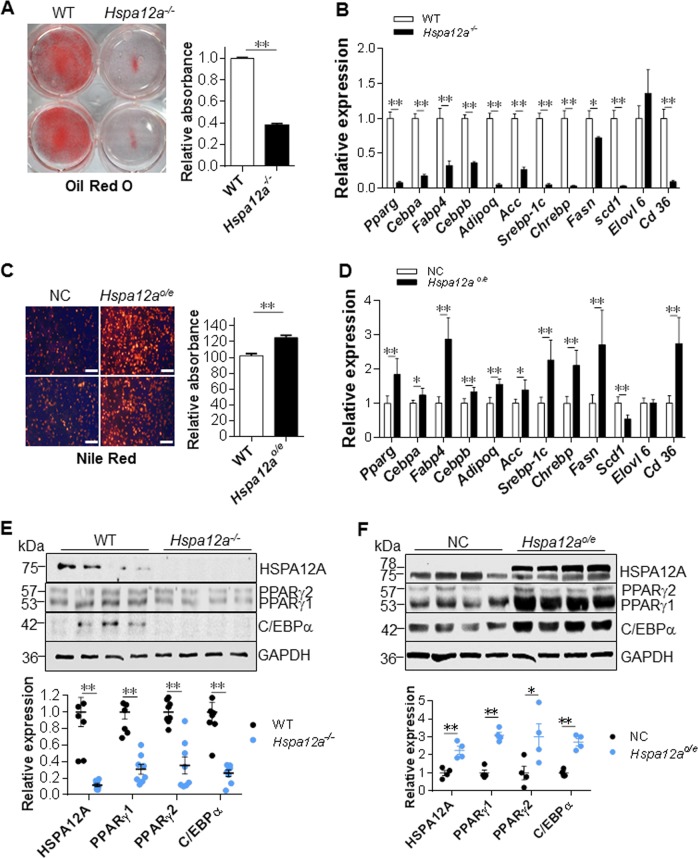Fig. 6.
HSPA12A regulated adipocyte differentiation and PPARγ expression in vitro. a, b HSPA12A deficiency suppressed adipocyte differentiation. Differentiation was induced in primary SVF isolated from WT and Hspa12a-/- mice. Lipid droplets were examined by ORO staining (a). Expression of mRNA was examined using real-time PCR (b). Data are mean ± SEM, **P < 0.01 and *P < 0.05 by Student’s two-tailed unpaired t-test. n = 11/group (ORO) and n = 6/group (PCR). c, d HSPA12A overexpression promoted adipocyte differentiation. Primary SVF was isolated from WT mice and was overexpressed with HSPA12A (Hspa12ao/e) by infection with adenovirus-carried Hspa12a expression sequence. The SVF infected with empty virus served as normal controls (NC). Six days after differentiation induction, lipid accumulation was evaluated by Nile red staining (c Scale bar = 100 μm) and mRNA levels were examined using real-time PCR (d). Data are mean ± SEM, **P < 0.01 and *P < 0.05 by Student’s two-tailed unpaired t-test. n = 8/group (Nile red) and n = 5–6/group (PCR). e HSPA12A deficiency decreased PPARγ expression. Primary SVF were isolated from WT and Hspa12a-/- mice. Six days after differentiation, expression of the indicated proteins was examined by immunoblotting. Data are mean ± SEM, **P < 0.01 by Student’s two-tailed unpaired t-test. n = 8/group. f HSPA12A overexpression increased PPARγ expression. Primary SVF was isolated from WT mice and was overexpressed with HSPA12A (Hspa12ao/e). The NC SVF served as controls. Six days after differentiation induction, the indicated protein expression was examined using immunoblotting. Data are mean ± SEM, **P < 0.01 and *P < 0.05 by Student’s two-tailed unpaired t-test. n = 4/group. Note: Endogenous HSPA12A is 75 kDa, exogenous HSPA12A is 78 kDa containing 3 flags

